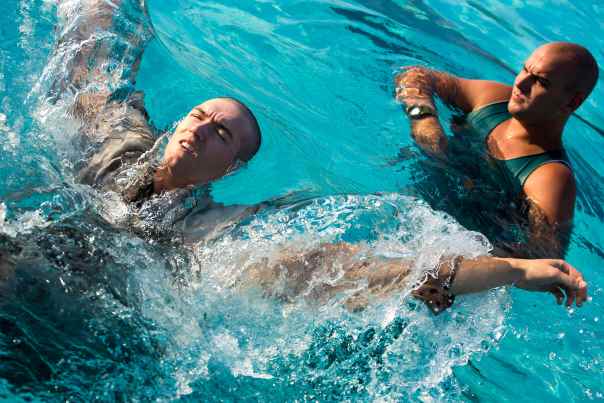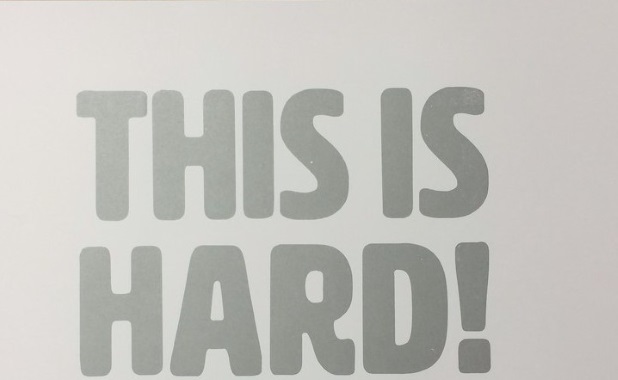What is the Most Difficult and Exhausting Swimming Stroke? Find Out Here Today!
Why swim for fun only, when you can eat your cake and have it, you know, by getting the best workout from the water?
By mastering the hardest swimming stroke, you can lose weight and build your upper-body strength.
Gliding effortlessly through the water, leaving a smooth trail in your wake, seems like a magical ability. But behind that graceful movement lies a world of technique, power, and endurance.
Each swimming stroke demands its own unique combination of these elements, with one contender consistently vying for the title of “hardest”: the butterfly.
Yet, the difficulty is subjective, and what might tax one swimmer could feel natural to another.
Thus, you cannot know what is the best swimming stroke is without exploring its challenges and benefits.
Tell you what though… Swimming gives the best results, if you are ready to put in the work.
What is the toughest swim stroke to learn?

The butterfly swimming stroke undeniably demands mastery. Its synchronized undulations, dolphin kicks, and simultaneous arm pulls require exceptional strength, flexibility, and coordination.
While other strokes involve propelling yourself forward, the butterfly demands generating lift with each undulation, adding another layer of complexity.
This complicated dance of moves makes it challenging for beginners and pushes even seasoned swimmers to their limits.
However, the difficulty isn’t always synonymous with intensity. Consider the backstroke, and look at it as relaxing.
The good thing is that maintaining proper body position and performing underwater dolphin kicks, crucial for efficient backstroke, engages core muscles intensely.
Similarly, the breaststroke, despite its slower pace, works out the major leg muscles, leaving many breathless after a few laps.
How many calories do you burn with the hardest swimming stroke?
So we agree that the butterfly is the hardest swimming stroke. But it is not all about challenges because it also has great rewards. More pain, more gains, it seems.
While the butterfly burns a respectable 820 calories per hour, it shares the top spot with the front crawl in this category.
Please note that the calorie burn rate is not determined by the swimming technique alone. Rather, it also depends on factors like body weight, intensity, and technique.
While the butterfly swimming stroke will burn fat for many people, maintaining a high-intensity front crawl could yield similar results.
The secret is to combine the butterfly with a proper, protein-rich diet. This is going to help you lose weight faster.
Which is the easiest swimming technique?
The butterfly is the hardest swimming stroke, and on the other end of the spectrum, there is the front crawl (freestyle) swimming technique.
It is characterized by rhythmic arm movements and alternating leg kicks to offer a natural flow, making it easier to learn and maintain.
The backstroke, with its relaxed head position and reliance on kicking power, also ranks as beginner-friendly.
When you are learning how to swim by yourself, start with the easiest stroke for motivation. The freestyle and the backstroke are great for beginners.
Of course, even mastering such strokes requires consistency. Therefore, aim to swim as regularly as possible. For instance, you can enjoy great results of swimming daily for a month.
If you are looking for the best swimming stroke to tone abs, go for the butterfly. You will break a sweat, but it will be well worth it.
How many calories do different swimming strokes burn?
The goal of swimming three times a week, 5 times a week or more, is to lose weight, build body strength, and tone the muscles.
And it works perfectly, even when you just want recreational fun. So, how many calories will swimming help you burn?
Here’s a breakdown of the estimated calorie burn per hour for different strokes:
- Butterfly: 820 calories
- Front Crawl: 820 calories
- Backstroke: 740 calories
- Breaststroke: 740 calories
Remember, these are estimates, and your actual burn will vary based on individual factors.
Also, beginner swimmers might find it hard to maintain their swimming pace for a full 60 minutes. Therefore, starting with 30 minutes of swimming is okay, and then you can build on that as you gain more experience.
Is butterfly the most difficult stroke?

The general sentiment is that the butterfly is the most challenging swimming stroke.
But while it reigns supreme in complexity, its difficulty depends on your perspective. If raw strength and coordination are your kryptonite, the butterfly might seem insurmountable.
On the other hand, a swimmer with naturally strong legs might struggle more with the front crawl’s kicking pattern.
If you decide that the butterfly stroke will help you lose belly fat, you better know how to do it right. Here is how to perfect your butterfly stroke:
Body position
Imagine your body forming a smooth wave. Keep your hips high, engaging your core for stability. Avoid excessive head lifting, just enough to breathe with minimal disruption. Remember, you undulate, not rise and fall.
The catch
Your hands enter the water shoulder-width apart, thumbs down, slightly ahead of your head. Imagine “scooping” water as you pull your elbows high and inward, like a powerful double high-five underwater.
The pull
Don’t “S-curve” your arms. Maintain a high elbow position as you pull smoothly back, engaging your lats and back muscles. Imagine pushing water backward until your hands meet near your hips.
The undulation
As your arms pull, undulate your body downward like a dolphin kicking its tail. Time your kick with the end of your pull for maximum propulsion. Engage your core for a powerful and efficient kick.
Recovery
As your hands exit the water, relax and sweep them forward and high, skimming the surface. Imagine your hands “flying” before entering the water for the next catch.
Breathing
Breathe every other stroke, lifting your head just enough to inhale as your arms reach their highest point. Don’t lift your head too high, as it disrupts your body line. Exhale underwater smoothly before your next pull.
Practice drills
Isolate specific aspects with drills. Try one-arm butterfly to focus on individual pulls, kicking drills to master your dolphin kick, and underwater butterfly to refine your breathing timing.
Seek guidance
Consider working with a coach or experienced swimmer for personalized feedback and technique correction.
Remember, perfecting the butterfly takes time and consistent practice. Give yourself time, and you will become a master.
Which swimming technique builds upper body strength?

We know that swimming works out almost all muscle groups, with the upper body getting the bulk of the benefits.
However, there is one or two swim techniques that whip the upper body into shape and once you master them, you will know why swimmers have broad shoulders.
Long story short, both the butterfly and front crawl engage major upper body muscles like your back, shoulders, and chest.
The butterfly’s powerful pulls and undulations offer a more concentrated workout for these areas.
Consider combining strokes to target different muscle groups and keep your workouts dynamic.
Also, check out my past posts on:
Can you swim with a yeast infection?
Can you swim with a herpes outbreak?
Conclusion and Recommendation
The most important thing in swimming is to master all four swimming strokes, from the easiest to the most challenging.
Therefore, we can say there is no single “hardest” stroke, as difficulty is subjective and depends on individual strengths and weaknesses.
Each swimming technique offers unique challenges and benefits. Exploring different techniques and finding your flow is the key to enjoying the water and reaping the numerous rewards of swimming.
Remember, technique matters more than speed or perceived difficulty when it comes to maximizing your workout and preventing injuries. Therefore, find a stroke you enjoy, focus on perfecting your form, and discover the magic of moving through the water with ease and grace.
